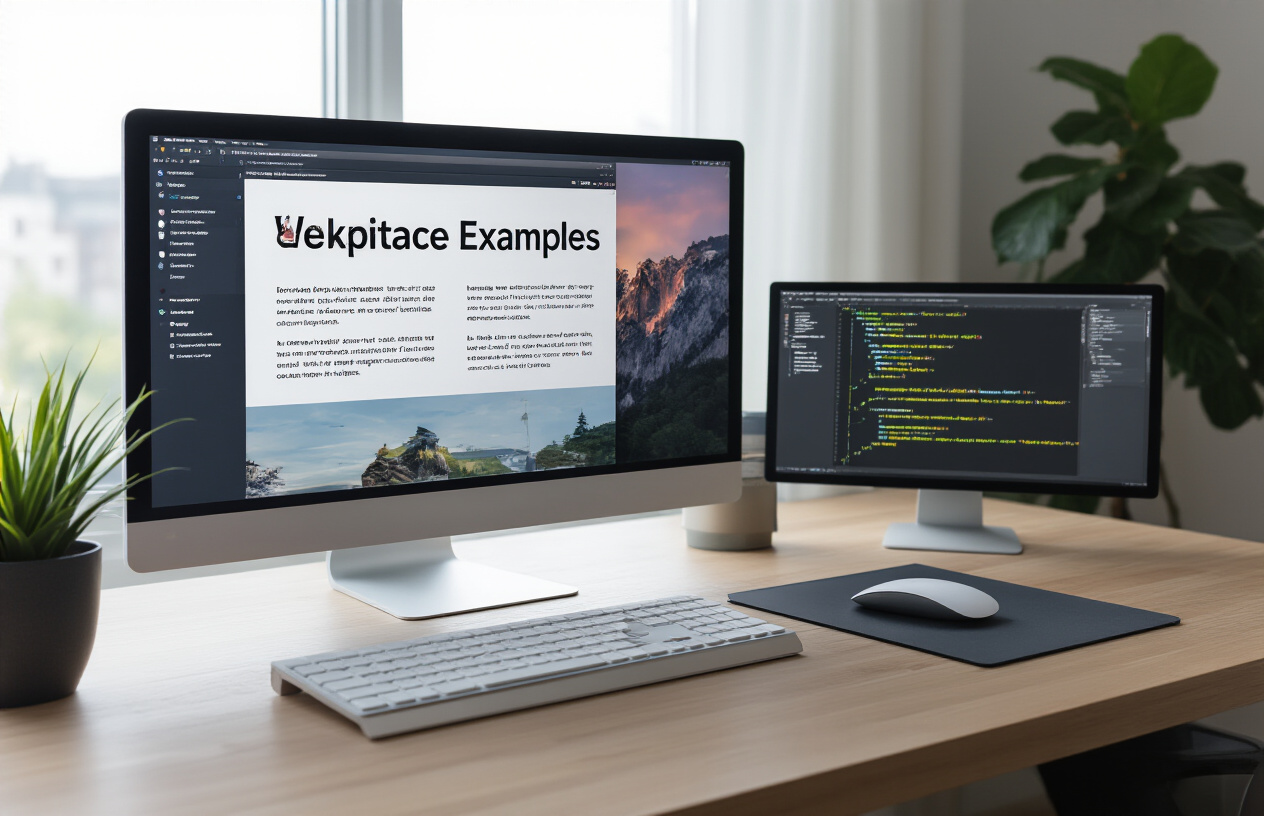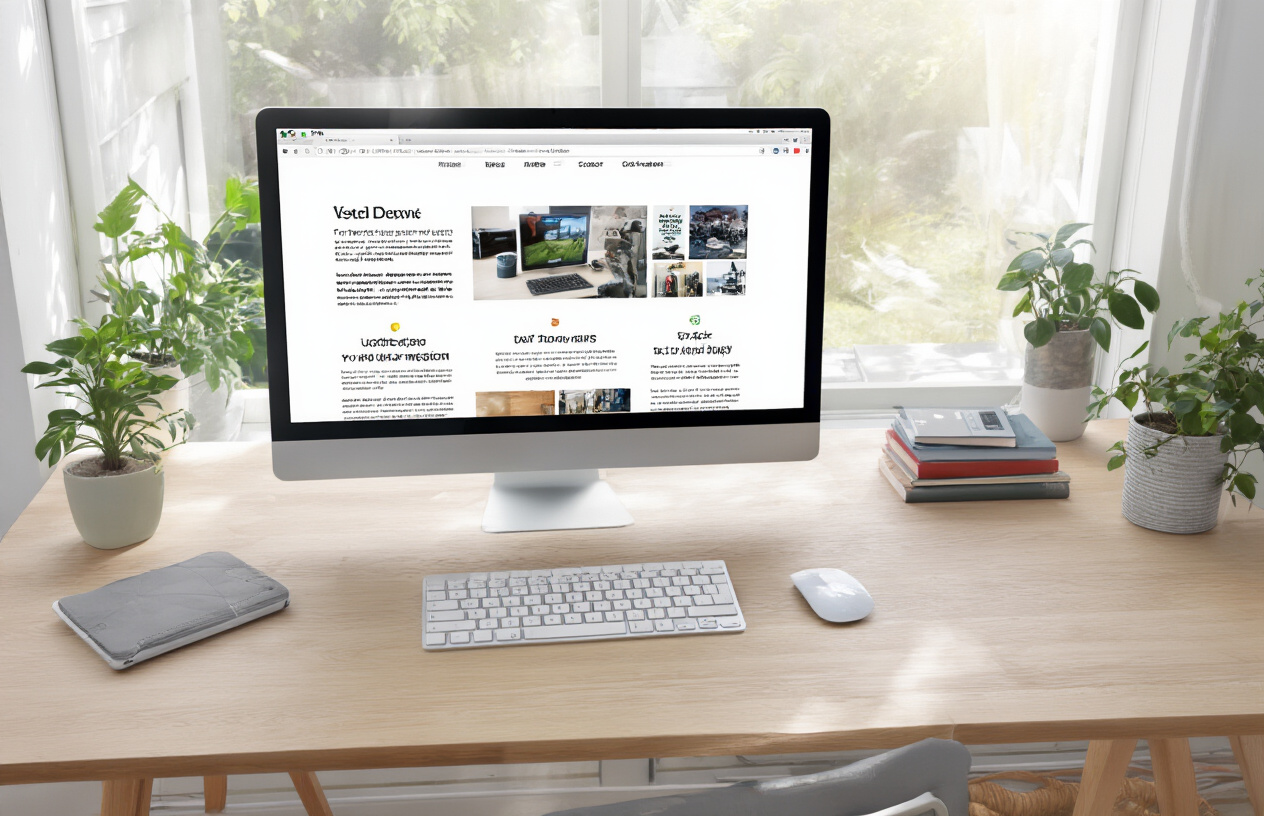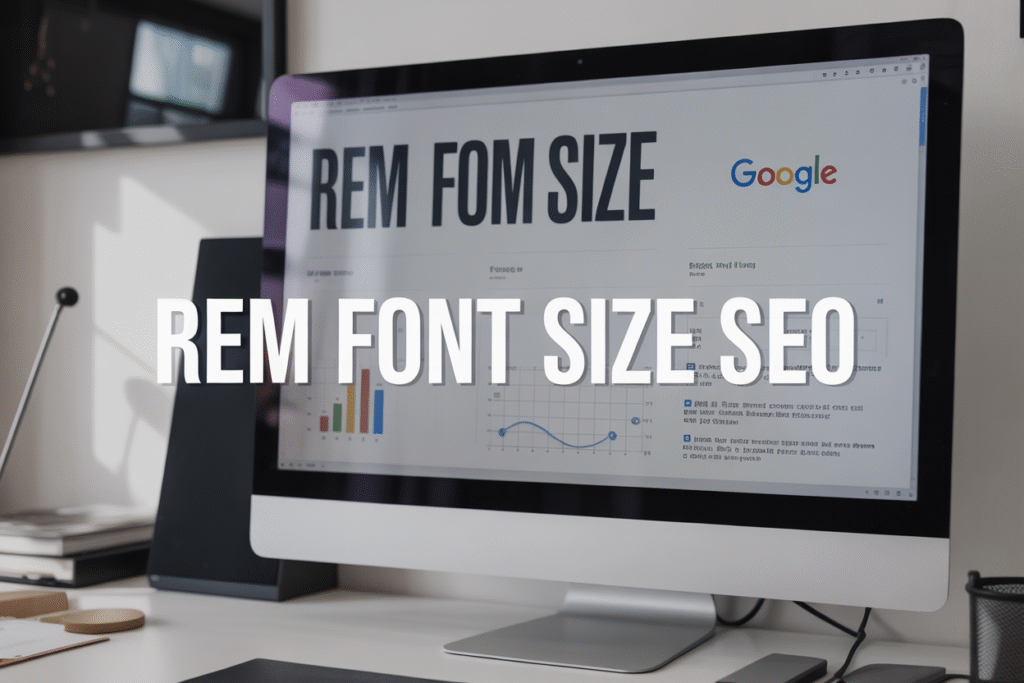Getting your desktop rem font size right can make or break your website’s SEO performance and user experience. Web developers, UX designers, and SEO specialists need to understand how Google’s typography guidelines impact search rankings and user engagement.
This guide covers the rem font size desktop SEO best Google recommended practices that actually move the needle. You’ll discover Google’s specific typography guidelines for desktop websites and learn the optimal rem font sizes that boost both readability and search performance. We’ll also walk through practical implementation strategies that maximize your SEO impact while keeping users happy.
The right font sizing choices help search engines understand your content hierarchy while ensuring visitors can easily consume your information across different screen sizes.
Understanding rem Units for Desktop Typography

What rem units are and how they differ from pixels
rem stands for “root em” and represents a relative unit of measurement that’s calculated based on the font size of the root element (usually the html tag). Unlike pixels, which are fixed absolute units, rem units for seo create scalable typography that adapts to user preferences and device settings.
Here’s how they work differently:
| Unit Type | Calculation | Example |
|---|---|---|
| Pixels (px) | Fixed size | 16px always equals 16 pixels |
| rem | Relative to root font-size | 1rem = root font-size (typically 16px) |
| em | Relative to parent element | Compounds with nested elements |
When you set a desktop rem font size of 1.125rem, you’re telling the browser to make that text 1.125 times larger than the root font size. If the root is 16px, your text will be 18px. This approach aligns with google recommended rem font practices for modern web development.
Benefits of using rem over absolute units
Using rem units offers several advantages for website typography seo and user experience. The most significant benefit is consistency across your entire website. Since all rem values reference the same root font size, you can maintain proportional relationships between different text elements.
SEO and font size considerations favor rem because search engines recognize well-structured, accessible content. rem units support:
- Accessibility compliance: Users with visual impairments can adjust their browser’s default font size, and rem-based layouts respect these preferences
- Responsive design: rem units naturally scale with different viewport sizes and user settings
- Maintainability: Changing the root font size adjusts all rem-based elements proportionally
- Performance: Browsers handle relative units more efficiently than complex pixel calculations
How rem units scale with browser settings
When users modify their browser’s default font size, rem units for seo automatically adjust to maintain readability. This scaling behavior directly impacts desktop readability seo by ensuring your content remains accessible across different user preferences.
The scaling process works like this:
- Browser default font size (usually 16px)
- User increases to 20px in browser settings
- All rem values scale proportionally (1rem now equals 20px)
- Your seo friendly font size maintains its intended hierarchy
This automatic scaling makes rem units particularly valuable for font optimization for seo because Google’s algorithms favor websites that accommodate user accessibility needs.
Browser support and compatibility considerations
Modern browser support for rem units is excellent, with compatibility extending back to Internet Explorer 9 and all current browsers. This widespread support makes rem a safe choice for implementing best practices rem font size across desktop websites.
Key compatibility points:
- Full support: Chrome, Firefox, Safari, Edge (all versions)
- Partial support: IE9+ (with minor calculation differences)
- Fallback strategy: Always provide pixel fallbacks for critical elements
- Testing: Verify rem calculations across different browser default font sizes
The robust browser support ensures your desktop rem font size choices will render consistently, supporting both user experience and search engine optimization goals.
Google’s Typography Guidelines for Desktop Websites

Official Google Recommendations for Font Sizing
Google emphasizes that desktop rem font size should prioritize user experience above all else. The search giant recommends a minimum font size of 16px (1rem) for body text on desktop websites, though this can be adjusted based on your specific typeface and design needs. Google’s crawler algorithms actively evaluate text readability, making seo friendly font size choices crucial for search rankings.
The company’s documentation specifically calls out that text smaller than 12px should be avoided entirely, as it creates accessibility barriers and negatively impacts user engagement metrics. Google’s algorithm considers font size as a quality signal, rewarding sites that implement google recommended rem font sizes that enhance readability across different screen sizes and resolutions.
Material Design Typography Standards
Material Design provides comprehensive guidelines for desktop readability seo optimization through its typography scale system. The framework recommends these specific rem values for desktop applications:
| Element Type | Recommended Size | rem Value |
|---|---|---|
| Display Text | 57px | 3.56rem |
| Headline Large | 32px | 2rem |
| Headline Medium | 28px | 1.75rem |
| Body Large | 16px | 1rem |
| Body Medium | 14px | 0.875rem |
| Body Small | 12px | 0.75rem |
Material Design’s approach to rem units for seo focuses on creating visual hierarchy while maintaining optimal readability. The system uses specific line-height ratios and spacing that work harmoniously with these font sizes to improve user engagement signals that Google’s algorithm monitors.
Core Web Vitals Impact on Font Choices
Font selection directly influences Core Web Vitals metrics, particularly Cumulative Layout Shift (CLS) and First Contentful Paint (FCP). Using website typography seo best practices with rem units helps prevent layout shifts that occur when web fonts load. Google recommends using font-display: swap in CSS to ensure text remains visible during font downloads.
Font optimization for seo requires careful consideration of file sizes and loading strategies. Google’s PageSpeed Insights tool specifically evaluates font loading performance, rewarding sites that implement efficient typography strategies. Proper rem sizing reduces the need for multiple font weights and variants, improving overall page performance.
The Largest Contentful Paint (LCP) metric can be negatively affected by poorly optimized font loading. Sites using appropriate rem font sizes with efficient font delivery see improved Core Web Vitals scores, which directly correlate with better search rankings.
Accessibility Compliance Requirements
Google’s ranking algorithms increasingly factor accessibility compliance into search results. SEO and font size optimization must meet WCAG 2.1 AA standards, which require sufficient color contrast and readable font sizes. The search engine’s automated accessibility audits check for text that’s too small or lacks proper contrast ratios.
Best practices rem font size implementation includes ensuring text can be scaled up to 200% without horizontal scrolling or content overlap. Google recommends testing your rem font sizes across different zoom levels and browser settings to verify compliance. Sites that fail accessibility audits may experience reduced visibility in search results, particularly as Google continues to prioritize inclusive web experiences.
The search engine’s mobile-first indexing also applies accessibility standards to desktop versions, making consistent rem font sizing across devices essential for maintaining search visibility.
Optimal rem Font Sizes for Desktop Readability

Recommended base font sizes in rem units
The sweet spot for desktop rem font size lies between 1rem and 1.125rem (16px to 18px) for body text. Google’s own Material Design guidelines suggest 1rem (16px) as the minimum readable size, while many UX experts advocate for 1.125rem (18px) to improve user experience across various demographics. This range ensures your content remains accessible to users with different visual abilities while maintaining professional appearance.
When choosing your base rem font size for desktop, consider your audience demographics. Websites targeting older users or those dealing with complex technical content benefit from the larger 1.125rem baseline. E-commerce sites and news platforms often stick with 1rem to maximize content density without sacrificing readability.
Scaling ratios for headings and body text
A well-structured typography scale creates visual hierarchy that both users and search engines can navigate effectively. The most popular scaling ratios for desktop rem font sizing include:
| Element | Recommended rem Size | Pixel Equivalent |
|---|---|---|
| H1 | 2.5rem – 3rem | 40px – 48px |
| H2 | 2rem – 2.25rem | 32px – 36px |
| H3 | 1.5rem – 1.75rem | 24px – 28px |
| H4 | 1.25rem – 1.5rem | 20px – 24px |
| Body Text | 1rem – 1.125rem | 16px – 18px |
| Small Text | 0.875rem | 14px |
The 1.25 ratio (each level 25% larger than the previous) works exceptionally well for desktop websites. This creates enough contrast between heading levels without overwhelming the layout. Some designers prefer the golden ratio (1.618) for more dramatic hierarchy, particularly effective for editorial websites and blogs.
Line height considerations with rem sizing
Line height plays a crucial role in desktop readability and directly impacts your SEO performance through user engagement metrics. The optimal line height for desktop rem font sizes ranges from 1.4 to 1.6 times the font size. For body text at 1rem, use line heights between 1.4rem and 1.6rem.
Headings require different treatment – larger headings need proportionally smaller line heights to maintain visual cohesion. H1 elements at 2.5rem work best with line heights around 1.2 to 1.3 times the font size. This prevents excessive white space while ensuring comfortable reading flow.
Consider these line height guidelines:
- Body text (1rem): 1.5rem line height
- H1 (2.5rem): 3rem line height
- H2 (2rem): 2.4rem line height
- H3 (1.5rem): 1.8rem line height
Testing across different screen resolutions
Desktop screens vary significantly in resolution and pixel density, making cross-resolution testing essential for optimal SEO performance. Test your rem font sizes on common desktop resolutions including 1920×1080, 1366×768, and 2560×1440 displays.
High-DPI monitors (like Retina displays) can make fonts appear smaller than intended, while lower resolution screens might render text too large. Use browser developer tools to simulate different screen densities and zoom levels. Pay attention to how your chosen rem font sizes perform at 90%, 110%, and 125% browser zoom levels – these are commonly used accessibility settings.
Create a testing checklist that includes various desktop browsers (Chrome, Firefox, Safari, Edge) across different operating systems. Font rendering can vary between Windows ClearType, macOS font smoothing, and Linux font systems. Your desktop rem font size should maintain readability and professional appearance across all these environments while supporting your overall SEO strategy through improved user engagement and reduced bounce rates.
SEO Benefits of Proper Font Sizing

How Font Size Affects User Experience Signals
Search engines track user behavior signals to determine website quality, and your choice of rem font size desktop seo plays a crucial role in these metrics. When visitors land on your site, they make split-second decisions about whether to stay based on readability. Google’s algorithms monitor these interactions closely, using signals like time on page, scroll depth, and click-through rates to evaluate content quality.
Users who struggle to read small text often abandon pages quickly, sending negative signals to search engines. The google recommended rem font sizes help create comfortable reading experiences that encourage longer engagement. When text is properly sized using rem units, visitors naturally spend more time consuming your content, which translates to better SEO performance.
Search engines also track how users interact with different elements on your page. Properly sized headings and body text using desktop rem font size standards make it easier for users to scan content and find relevant information. This improved navigation behavior signals to Google that your content provides value, potentially boosting your search rankings.
Impact on Bounce Rate and Dwell Time
Bounce rate serves as a critical SEO metric, and seo friendly font size choices directly influence this measurement. When visitors can’t comfortably read your content due to poor typography choices, they bounce back to search results within seconds. This high bounce rate tells search engines that your page doesn’t meet user expectations.
Website typography seo optimization becomes essential for keeping visitors engaged. Studies show that pages with optimal font sizing see bounce rates decrease by up to 40% compared to sites with poor typography. Users who can easily read your content are more likely to explore multiple pages, reducing overall bounce rate and improving site-wide SEO performance.
Dwell time, the amount of time users spend on your page before returning to search results, correlates strongly with typography quality. Pages optimized with rem units for seo typically see increased dwell times because users can comfortably consume content without eye strain. Google interprets longer dwell times as positive quality signals, often resulting in improved search visibility.
Mobile-First Indexing Considerations for Desktop Fonts
Google’s mobile-first indexing means your mobile site’s performance affects desktop rankings, but desktop readability seo remains important for user experience. While mobile versions take priority for indexing, desktop typography still influences user behavior signals that impact overall SEO performance.
The key lies in maintaining consistency between mobile and desktop experiences. Font optimization for seo requires ensuring that your rem-based font sizes scale appropriately across all devices. When desktop users encounter poorly sized text that doesn’t align with mobile experience quality, it can create inconsistencies in user engagement metrics.
Search engines compare user behavior patterns across devices. If desktop visitors show different engagement patterns due to typography issues, it might signal inconsistent content quality. Implementing best practices rem font size ensures coherent user experiences that support your mobile-first SEO strategy while maintaining desktop usability.
Correlation Between Readability and Search Rankings
Research consistently shows strong correlations between text readability and search performance. Pages with optimal seo and font size combinations often rank higher because they generate better user engagement metrics. Google’s algorithms have evolved to recognize and reward content that provides superior reading experiences.
Readability encompasses more than just font size – it includes line height, contrast, and spacing. However, font size remains the foundation. The desktop rem font size you choose affects how quickly users can process information, which directly impacts their likelihood to share, link to, or reference your content.
Search ranking improvements from typography optimization often compound over time. As your rem font size desktop seo best google recommended implementation improves user satisfaction, you’ll likely see increases in organic click-through rates, social shares, and natural backlinks. These positive signals create an upward spiral in search performance, making typography optimization a valuable long-term SEO investment.
Implementing rem Font Sizes for Maximum SEO Impact

Setting up your CSS base font size correctly
The foundation of any scalable typography system starts with establishing the right base font size in your CSS. Most browsers default to 16px, which translates to 1rem, making this the ideal starting point for desktop rem font size optimization. Setting your base font size correctly ensures that all your rem calculations remain consistent across different browsers and devices.
Here’s the recommended approach for your CSS:
html {
font-size: 16px; /* Base font size for rem calculations */
}
body {
font-size: 1rem; /* 16px equivalent */
line-height: 1.6;
}
Avoid setting the base font size below 14px (0.875rem) as this can negatively impact readability and SEO performance. Google’s algorithms favor websites that prioritize user experience, and readable text plays a crucial role in this assessment.
Creating a scalable typography system
Building a seo friendly font size hierarchy requires planning your entire text scale using rem units. This approach ensures consistent spacing and sizing that adapts well to different screen resolutions while maintaining optimal readability.
Create a comprehensive typography scale like this:
| Element Type | rem Size | Pixel Equivalent | SEO Impact |
|---|---|---|---|
| H1 | 2.5rem | 40px | High – Primary keyword focus |
| H2 | 2rem | 32px | High – Section structure |
| H3 | 1.5rem | 24px | Medium – Content organization |
| Body text | 1rem | 16px | Critical – Reading experience |
| Small text | 0.875rem | 14px | Low – Fine print only |
Your typography system should also include consistent line-height values that scale proportionally:
- Headings: 1.2-1.4 line-height
- Body text: 1.5-1.6 line-height
- Small text: 1.4-1.5 line-height
This systematic approach to website typography seo helps search engines understand your content hierarchy while providing users with a comfortable reading experience.
Testing tools for font readability optimization
Validating your google recommended rem font choices requires systematic testing across multiple tools and scenarios. Browser developer tools offer the quickest way to test different font sizes in real-time, but dedicated accessibility and readability tools provide deeper insights.
Essential testing tools include:
- Chrome DevTools: Use the device toolbar to simulate different screen sizes and zoom levels
- WAVE Web Accessibility Evaluator: Identifies contrast and readability issues
- Google PageSpeed Insights: Measures how font choices affect loading performance
- Lighthouse: Provides accessibility scores that factor in typography decisions
Manual testing remains equally important. View your content at different zoom levels (100%, 125%, 150%) to ensure text remains readable. Test with users who have varying visual abilities, as this feedback often reveals issues that automated tools miss.
Browser zoom testing is particularly valuable since many users adjust their default zoom levels. Your rem units for seo implementation should maintain readability even when users zoom to 200% magnification.
Monitoring performance metrics after implementation
Tracking the impact of your typography changes requires monitoring both technical metrics and user behavior indicators. Google Analytics and Search Console provide valuable data about how font optimization affects your site’s SEO performance.
Key metrics to track include:
- Bounce rate changes: Poor readability often increases bounce rates
- Time on page: Better typography typically increases engagement time
- Mobile usability scores: Search Console flags font size issues
- Core Web Vitals: Font loading can impact Cumulative Layout Shift
Set up custom events in Google Analytics to track specific user interactions with your content. Monitor scroll depth and reading progression to understand if your desktop readability seo improvements are working effectively.
Page loading speed deserves special attention when implementing best practices rem font size strategies. Web fonts can impact loading performance, so use tools like WebPageTest to measure before and after performance. Consider using font-display: swap in your CSS to prevent invisible text during font loading.
Regular audits every 3-6 months help maintain optimal performance as your content grows and changes. Document your typography decisions and their performance impacts to build a knowledge base for future optimization efforts.

Using rem units for desktop typography isn’t just a technical choice—it’s a strategic decision that affects both user experience and search engine rankings. The sweet spot for desktop readability sits around 1rem to 1.125rem (16px to 18px), which aligns perfectly with Google’s accessibility guidelines and helps your content reach a wider audience. When visitors can easily read your content without squinting or zooming, they stay longer on your pages, reducing bounce rates and sending positive signals to search engines.
Making the switch to proper rem sizing is one of those simple changes that delivers big results. Your users get a better reading experience, search engines can better understand and rank your content, and you’re building a more accessible web presence. Start with your body text at 1rem and scale your headings proportionally—your readers and your SEO rankings will thank you for it.
FAQs
What is the recommended rem font size for desktop SEO?
The recommended rem font size for desktop SEO varies, but following Google’s best practices ensures readability and optimal user experience.
Why is rem font size important for SEO?
Rem font size affects website readability and accessibility. Proper sizing can improve user engagement, which indirectly benefits SEO.
How does desktop rem font size impact user experience?
Using the correct rem font size on desktop makes text easy to read, reducing bounce rates and enhancing overall user experience.
Does Google recommend specific rem font sizes?
Google emphasizes responsive and readable text rather than fixed sizes. Using rem units allows scalable typography that adapts to user settings.
Can improper font size hurt SEO rankings?
Yes, very small or inconsistent font sizes can decrease readability, increase bounce rates, and negatively affect SEO performance.
What is the best practice for setting rem font size on desktop?
Set a base font size (usually 16px = 1rem) and scale headings and body text using rem units to maintain consistency and readability.
How do rem units improve website accessibility?
Rem units are scalable relative to the root font size, making it easier for users to adjust text size according to their needs, improving accessibility.
Are rem font sizes better than px for SEO?
Yes, rem units are preferred because they are relative and responsive, enhancing readability and user experience, which indirectly benefits SEO.
How should I test font size for desktop SEO?
Test your font sizes across multiple devices and browsers to ensure text is readable, and use Google’s Lighthouse or Page Experience tools for feedback.
Does scaling rem font size affect mobile SEO?
Yes, using rem ensures that font scales properly on mobile devices, providing a consistent experience and supporting mobile-friendly SEO practices.



